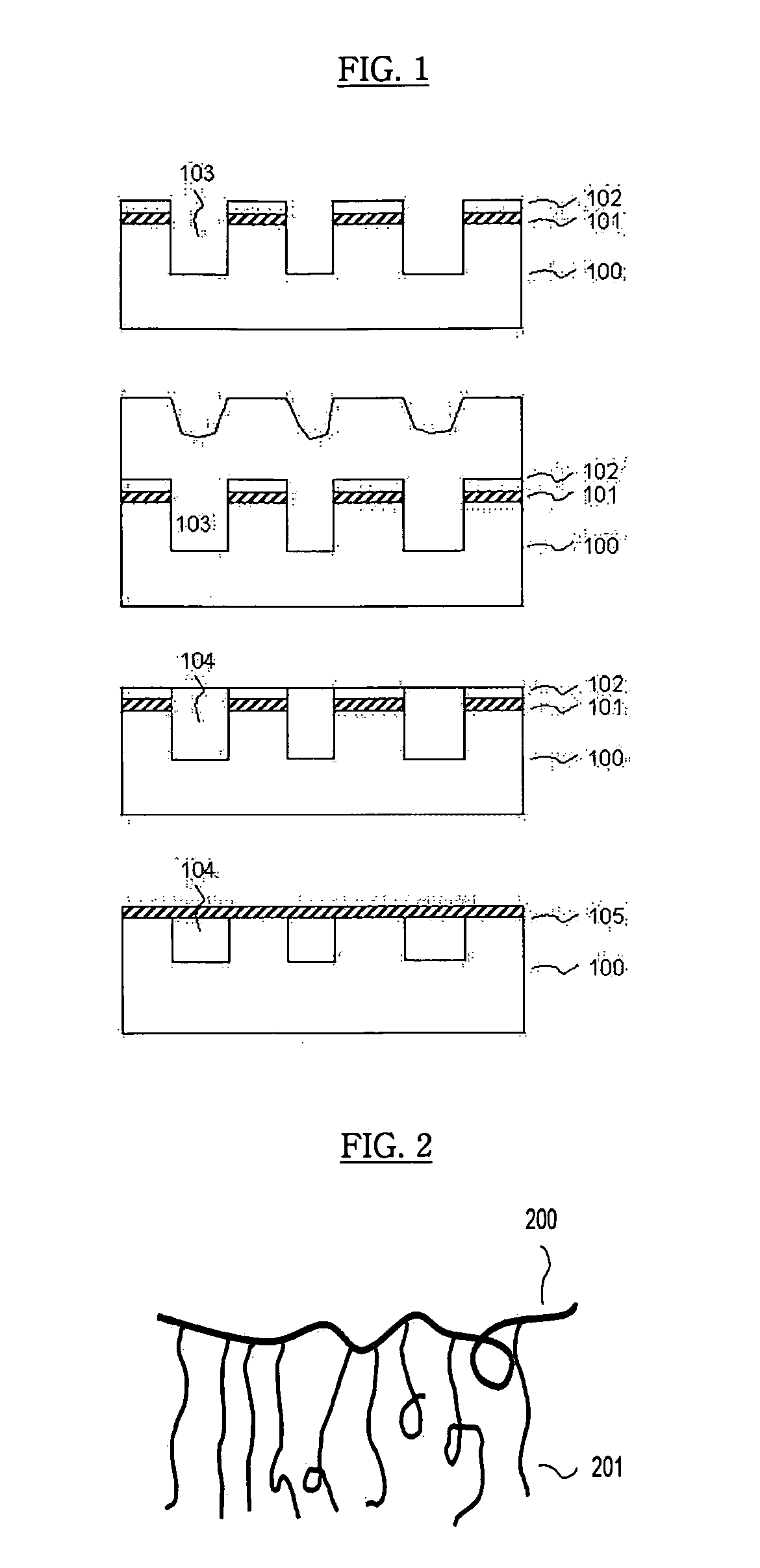Adjuvant for Controlling Polishing Selectivity and Chemical Mechanical Polishing Slurry
a technology of selectivity and polishing slurry, which is applied in the direction of polishing compositions, other chemical processes, lapping machines, etc., can solve the problems of reducing the margin of subsequent steps for manufacturing semiconductor devices, reducing the polishing selectivity of the insulating silicon oxide layer to the sin layer, and reducing the margin of subsequent steps. , to achieve the effect of minimizing the variation of thickness, minimizing the generation of microscratches, and high selectivity of silicon oxide layer
- Summary
- Abstract
- Description
- Claims
- Application Information
AI Technical Summary
Benefits of technology
Problems solved by technology
Method used
Image
Examples
example 1
Preparation of Linear Polyelectrolyte
[0070]To a 2 L glass reactor equipped with a thermometer, a stirrer, a dropping funnel, a nitrogen inlet tube and a reflux condenser, 160 parts by weight of distilled water and 240 parts by weight of isopropyl alcohol were introduced, the reactor was purged with nitrogen under stirring, and the reaction mixture was heated to 80° C. under nitrogen atmosphere.
[0071]To the reactor, an aqueous monomer solution containing 300 parts by weight of acrylic acid mixed with 250 parts by weight of distilled water and 90 parts by weight of an aqueous solution containing 9.7 wt % of ammonium peroxide as an initiator were added dropwise over 3 hours. After the completion of the addition, the reaction mixture was aged while maintaining the temperature at 80° C. for 2 hours to complete the polymerization.
[0072]After the polymerization, isopropyl alcohol and distilled water were extracted from the reaction mixture while increasing the pressure gradually from ambie...
examples [UNK]
Examples 2˜4
[0078]Adjuvant compositions for controlling polishing selectivity of CMP slurry and CMP slurry were provided in the same manner as described in Example 1, except that linear polyelectrolytes having different molecular weight characteristics as shown in the following Table 1 were used instead of the linear polyelectrolyte used in Example 1.
TABLE 1Ex. 1Ex. 2Ex. 3Ex. 4Relative24166189321586014944molecular weightPolydispersity1.761.691.631.60index (PDI)Solid content40.7238.5942.7742.90(wt %)
example 5
[0079]An adjuvant composition for controlling polishing selectivity of CMP slurry and CMP slurry comprising the same were provided in the same manner as described in Example 1, except that Cerasprese 5468, a linear polyelectrolyte available from Korea Sannopco Co., was used instead of the linear polyelectrolyte used in Example 1.
PUM
 Login to View More
Login to View More Abstract
Description
Claims
Application Information
 Login to View More
Login to View More - R&D
- Intellectual Property
- Life Sciences
- Materials
- Tech Scout
- Unparalleled Data Quality
- Higher Quality Content
- 60% Fewer Hallucinations
Browse by: Latest US Patents, China's latest patents, Technical Efficacy Thesaurus, Application Domain, Technology Topic, Popular Technical Reports.
© 2025 PatSnap. All rights reserved.Legal|Privacy policy|Modern Slavery Act Transparency Statement|Sitemap|About US| Contact US: help@patsnap.com



